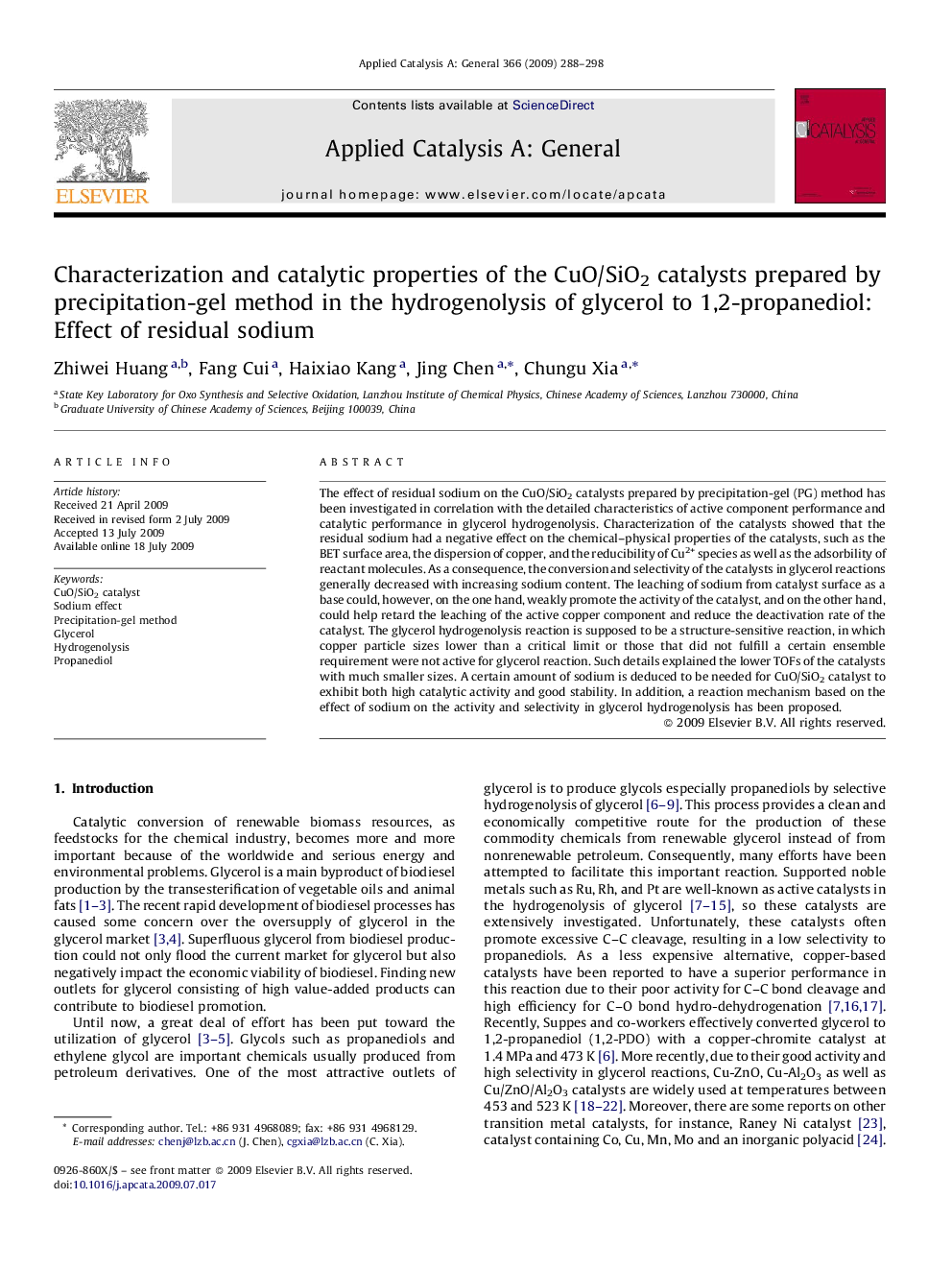| Article ID | Journal | Published Year | Pages | File Type |
|---|---|---|---|---|
| 42666 | Applied Catalysis A: General | 2009 | 11 Pages |
The effect of residual sodium on the CuO/SiO2 catalysts prepared by precipitation-gel (PG) method has been investigated in correlation with the detailed characteristics of active component performance and catalytic performance in glycerol hydrogenolysis. Characterization of the catalysts showed that the residual sodium had a negative effect on the chemical–physical properties of the catalysts, such as the BET surface area, the dispersion of copper, and the reducibility of Cu2+ species as well as the adsorbility of reactant molecules. As a consequence, the conversion and selectivity of the catalysts in glycerol reactions generally decreased with increasing sodium content. The leaching of sodium from catalyst surface as a base could, however, on the one hand, weakly promote the activity of the catalyst, and on the other hand, could help retard the leaching of the active copper component and reduce the deactivation rate of the catalyst. The glycerol hydrogenolysis reaction is supposed to be a structure-sensitive reaction, in which copper particle sizes lower than a critical limit or those that did not fulfill a certain ensemble requirement were not active for glycerol reaction. Such details explained the lower TOFs of the catalysts with much smaller sizes. A certain amount of sodium is deduced to be needed for CuO/SiO2 catalyst to exhibit both high catalytic activity and good stability. In addition, a reaction mechanism based on the effect of sodium on the activity and selectivity in glycerol hydrogenolysis has been proposed.
Graphical abstractThe residual sodium in the CuO/SiO2 catalysts prepared by precipitation-gel method showed a negative effect on the chemical–physical properties but a promotion effect on the activity and stability of the catalysts in glycerol hydrogenolysis. A certain amount of sodium is needed for CuO/SiO2 catalyst to exhibit both high activity and good stability in glycerol reactions.Figure optionsDownload full-size imageDownload as PowerPoint slide
